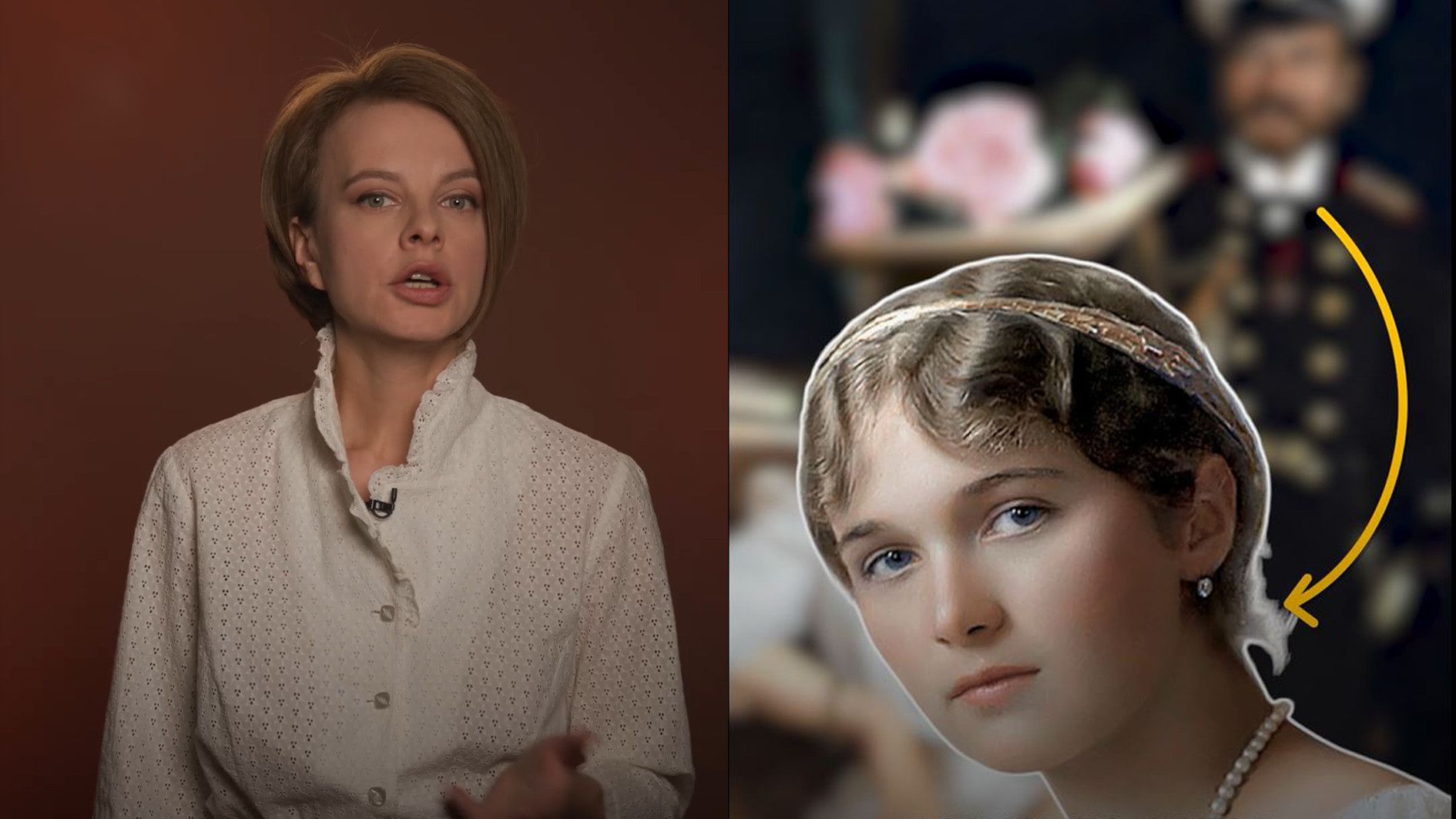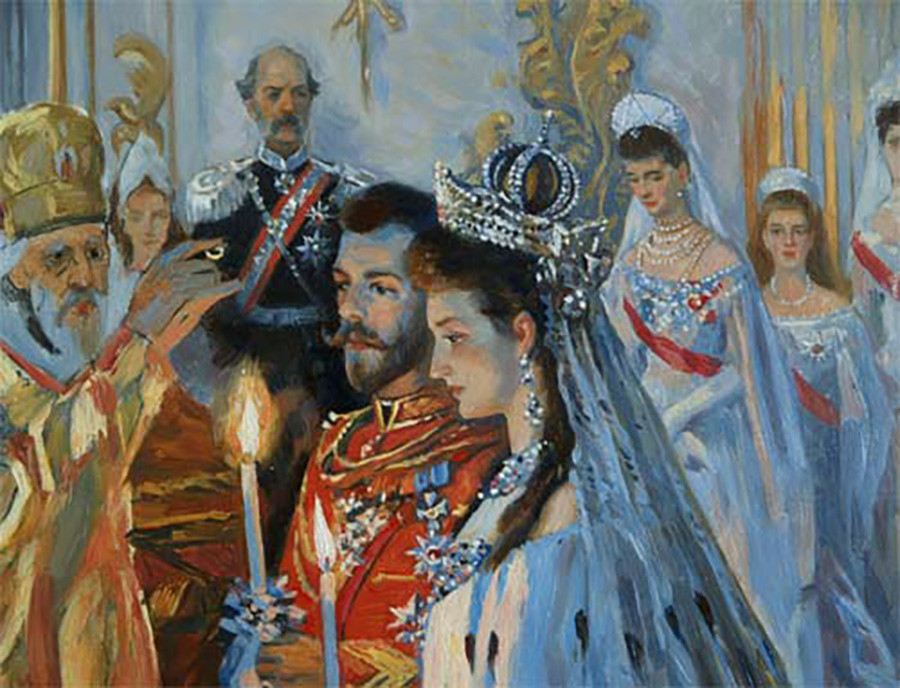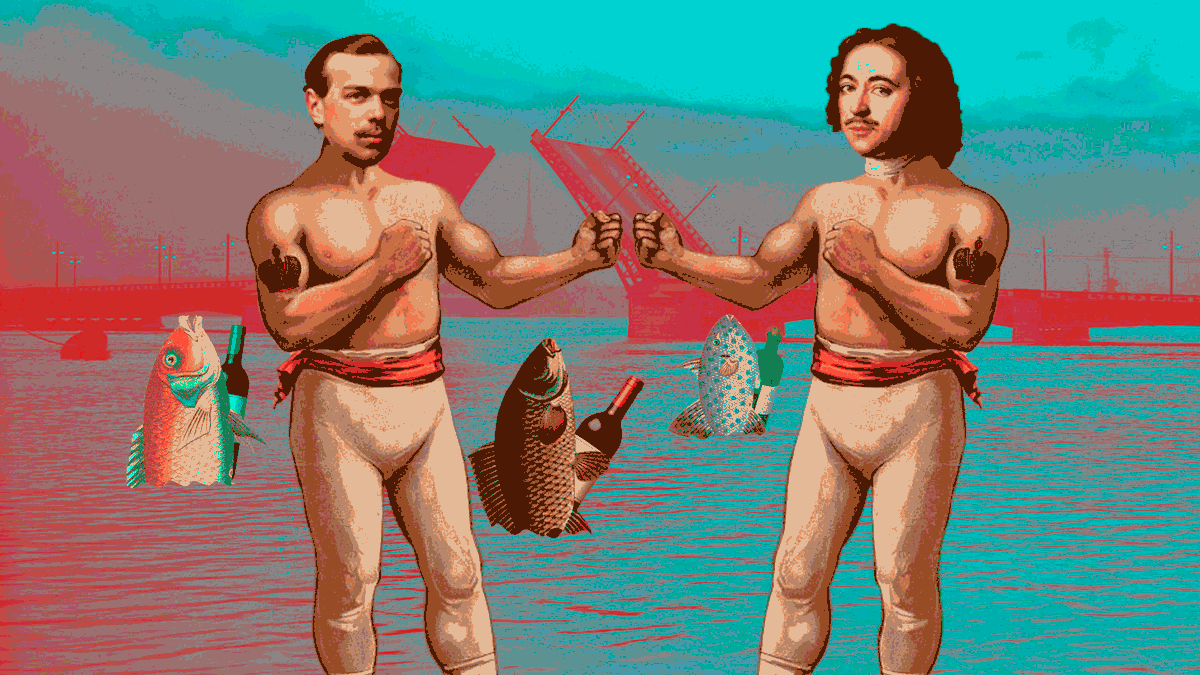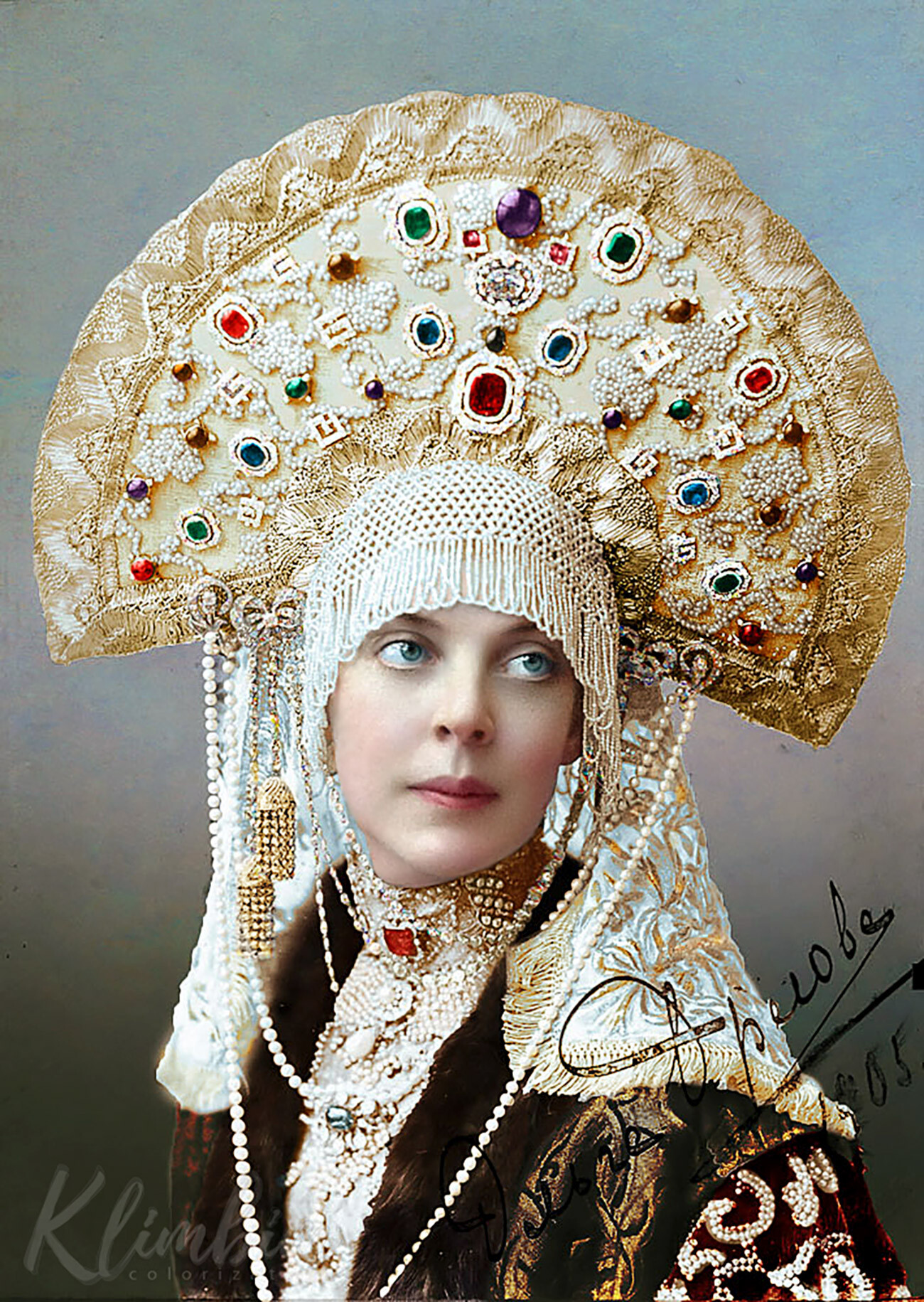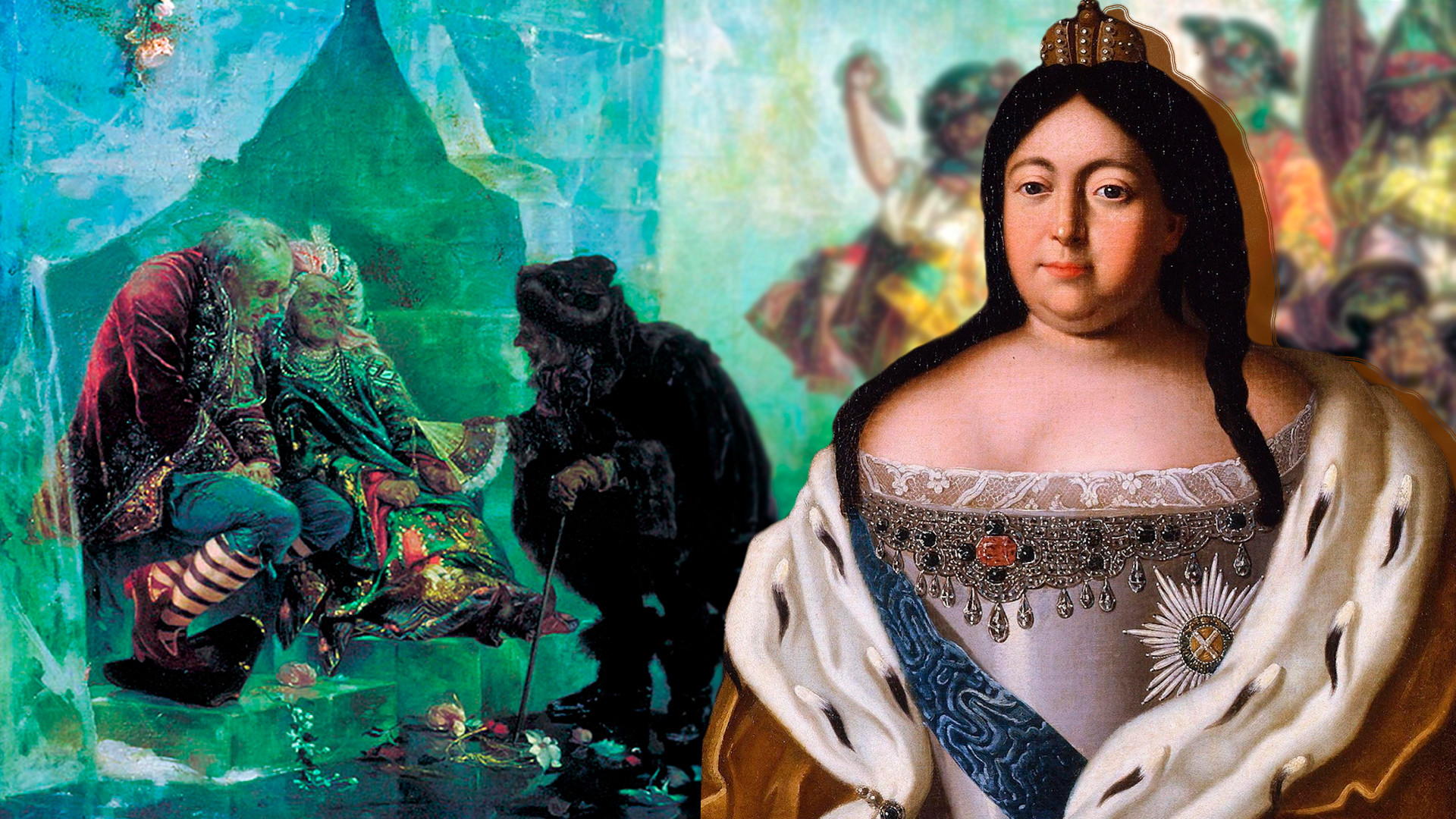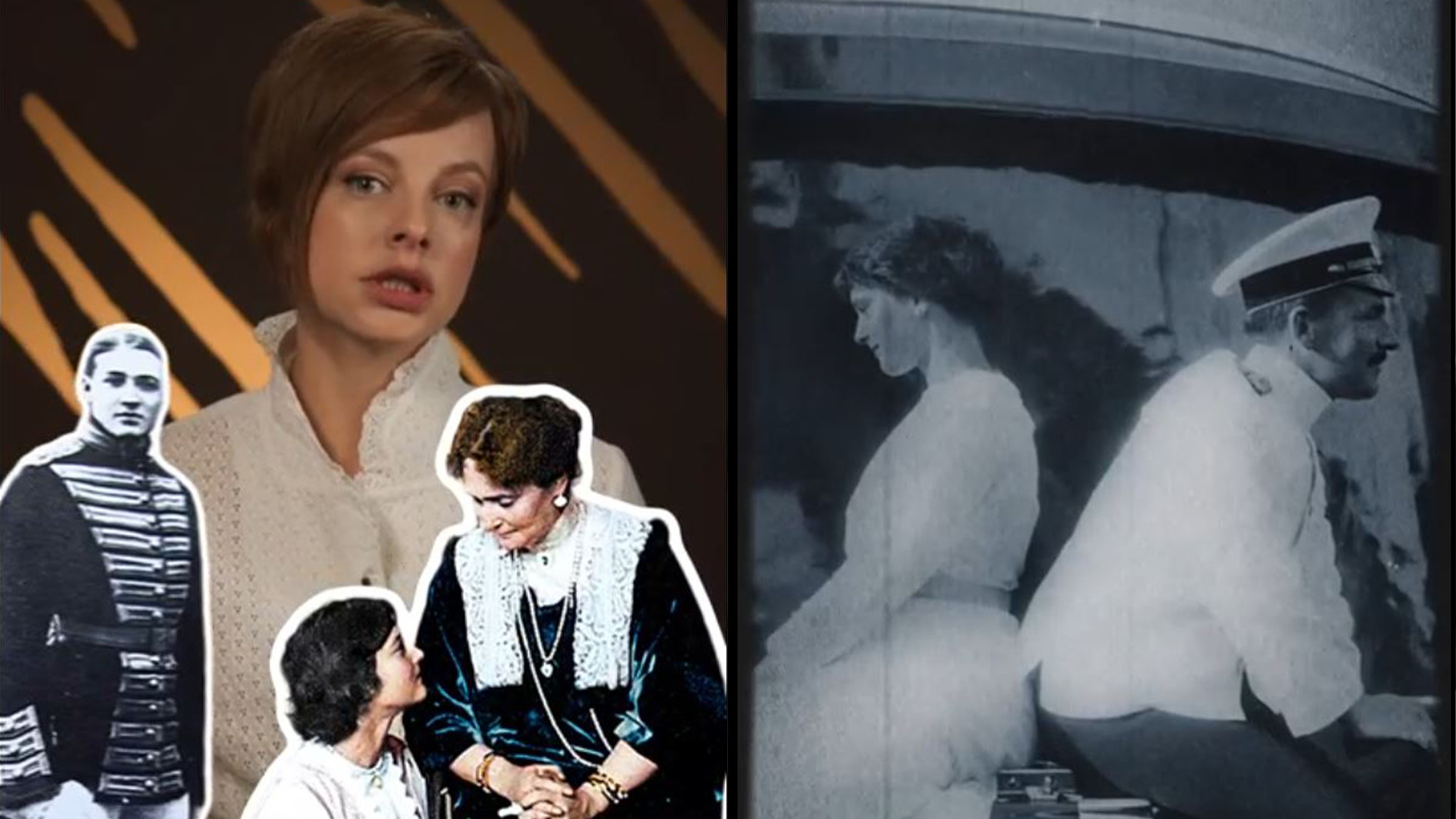
What kind of artists were the Romanov royal family?
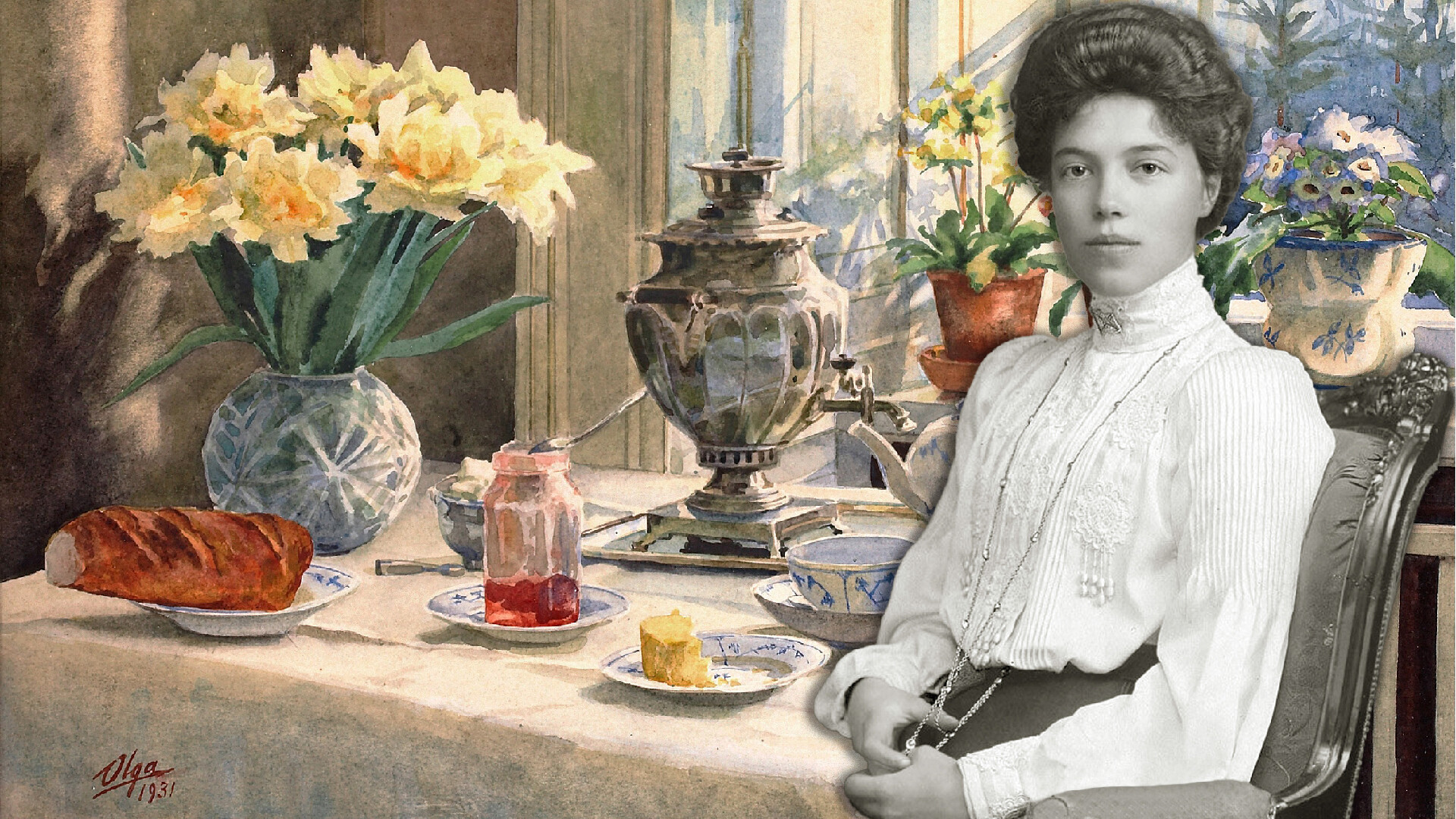
Emperor Nicholas I
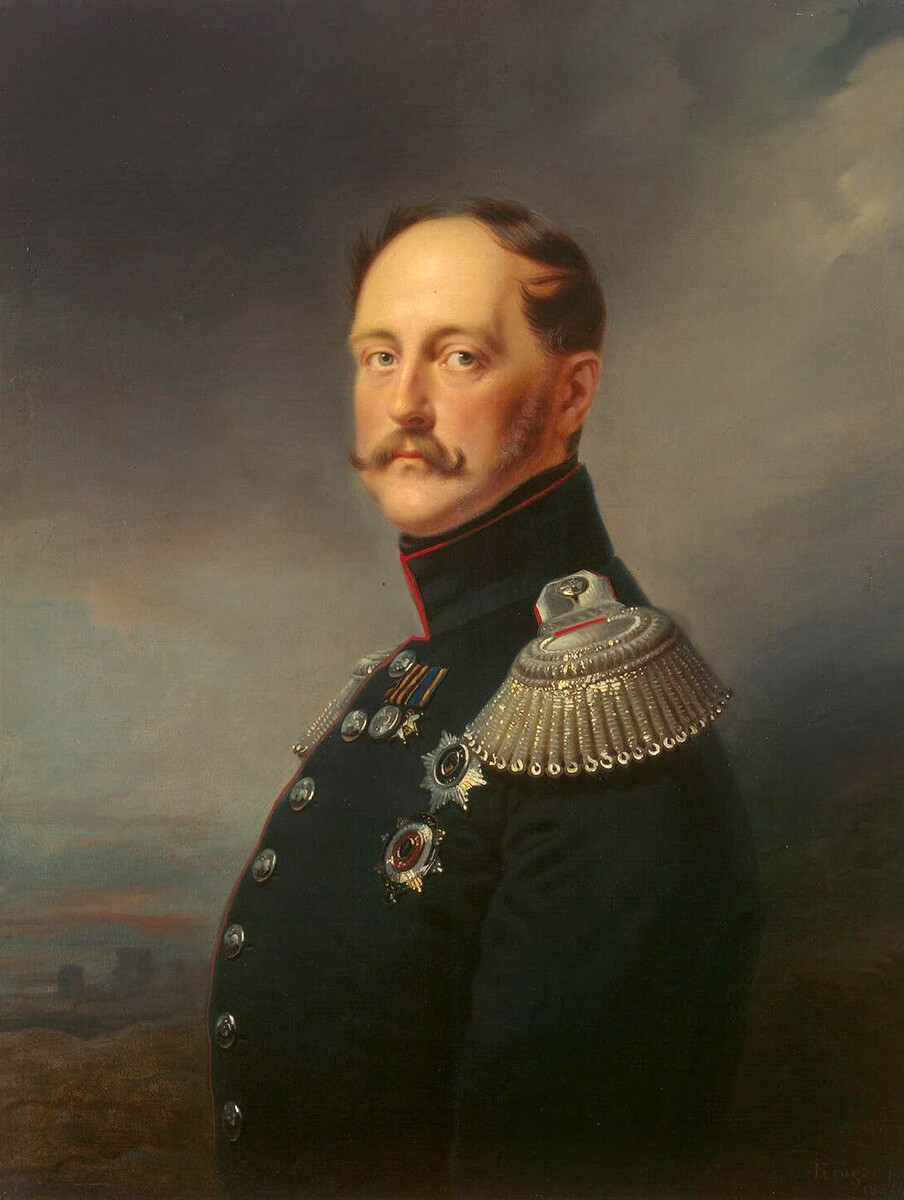 Portrait of Emperor Nicholas I, 1852, Franz Krüger.
Portrait of Emperor Nicholas I, 1852, Franz Krüger.
Emperor Nicholas I began drawing as a child, as was the custom in the royal family. One of his teachers was famous Russian artist Ivan Akimov. French writer Paul Lacroix, who worked on the biography of the monarch, said the following about his creative talent: “He had a talent for caricature and he captured in the most successful way the funny side of the persons he wanted to put in some satirical picture.”
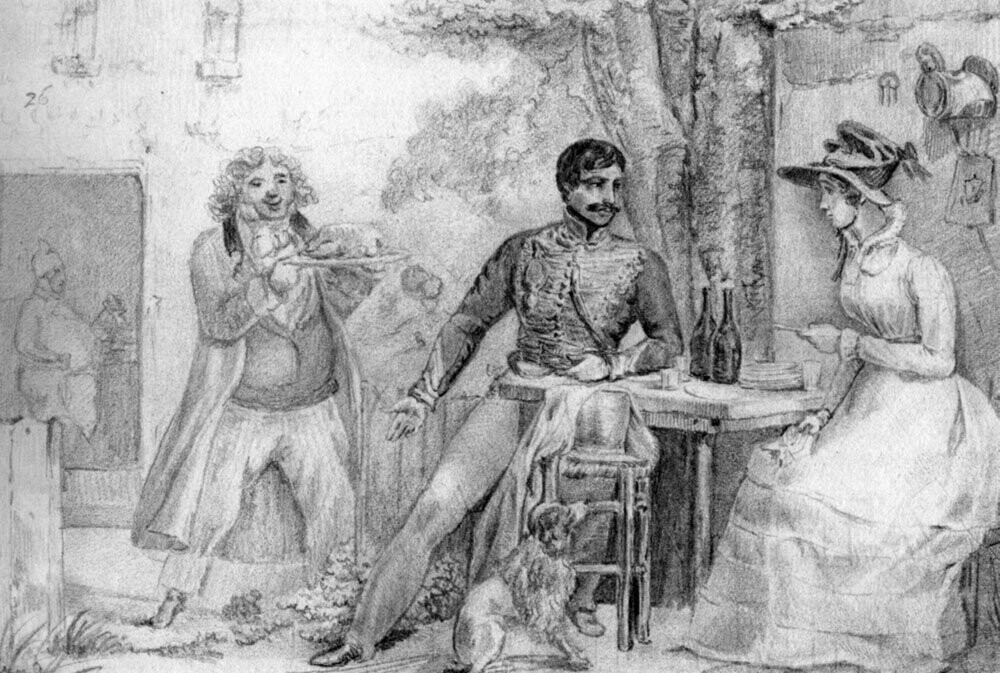 ‘In the Tavern.’
‘In the Tavern.’
 ‘At the Ball.’
‘At the Ball.’
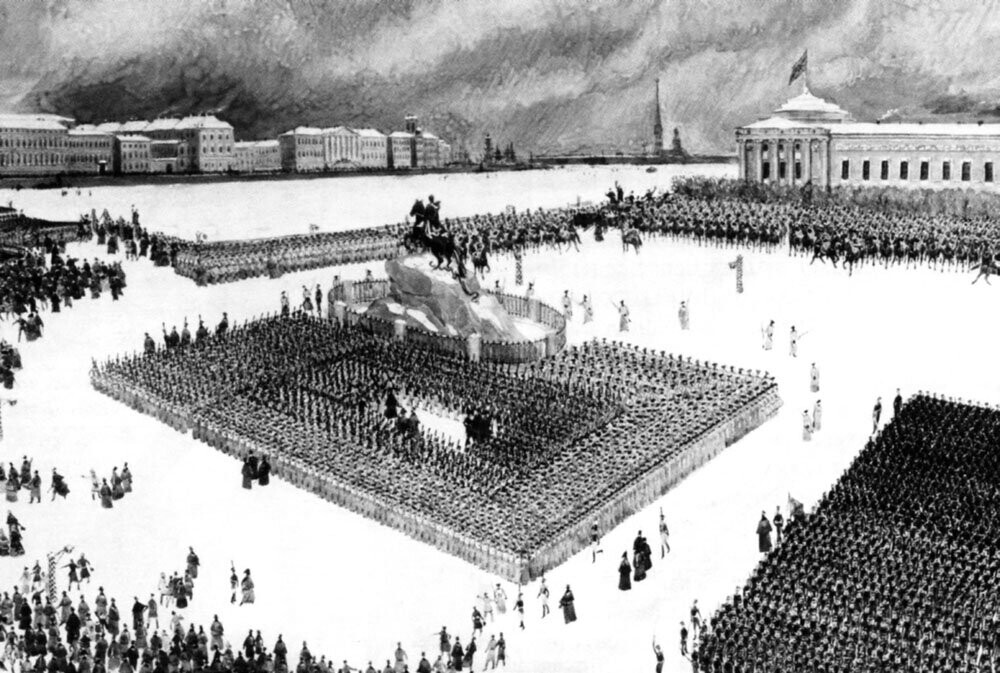 ‘Decembrist Rebellion.’
‘Decembrist Rebellion.’
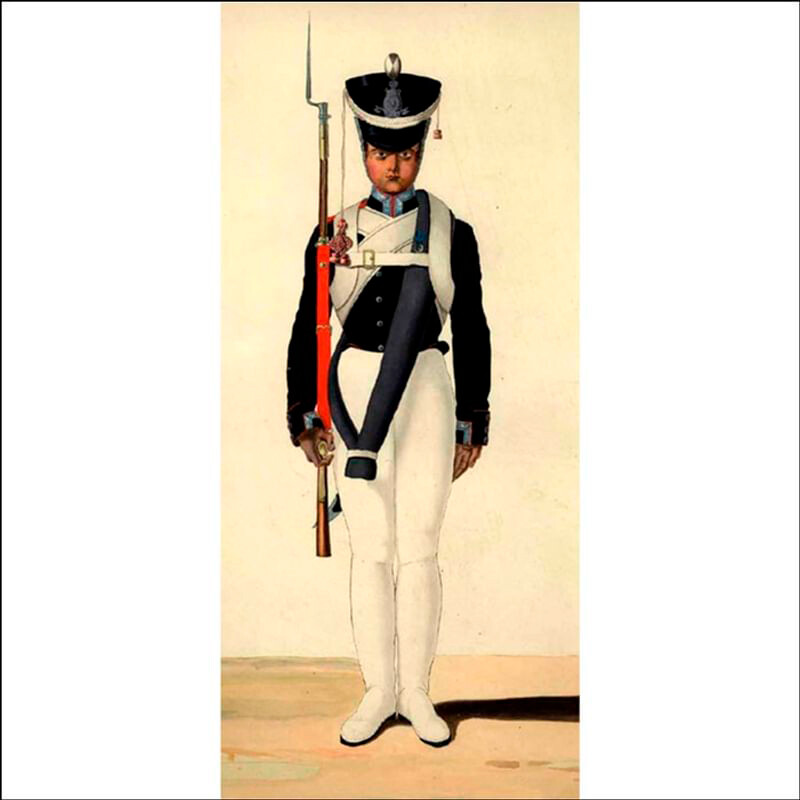 Non-commissioned officer of the Lifeguard Sapper Battalion.
Non-commissioned officer of the Lifeguard Sapper Battalion.
Emperor Alexander III
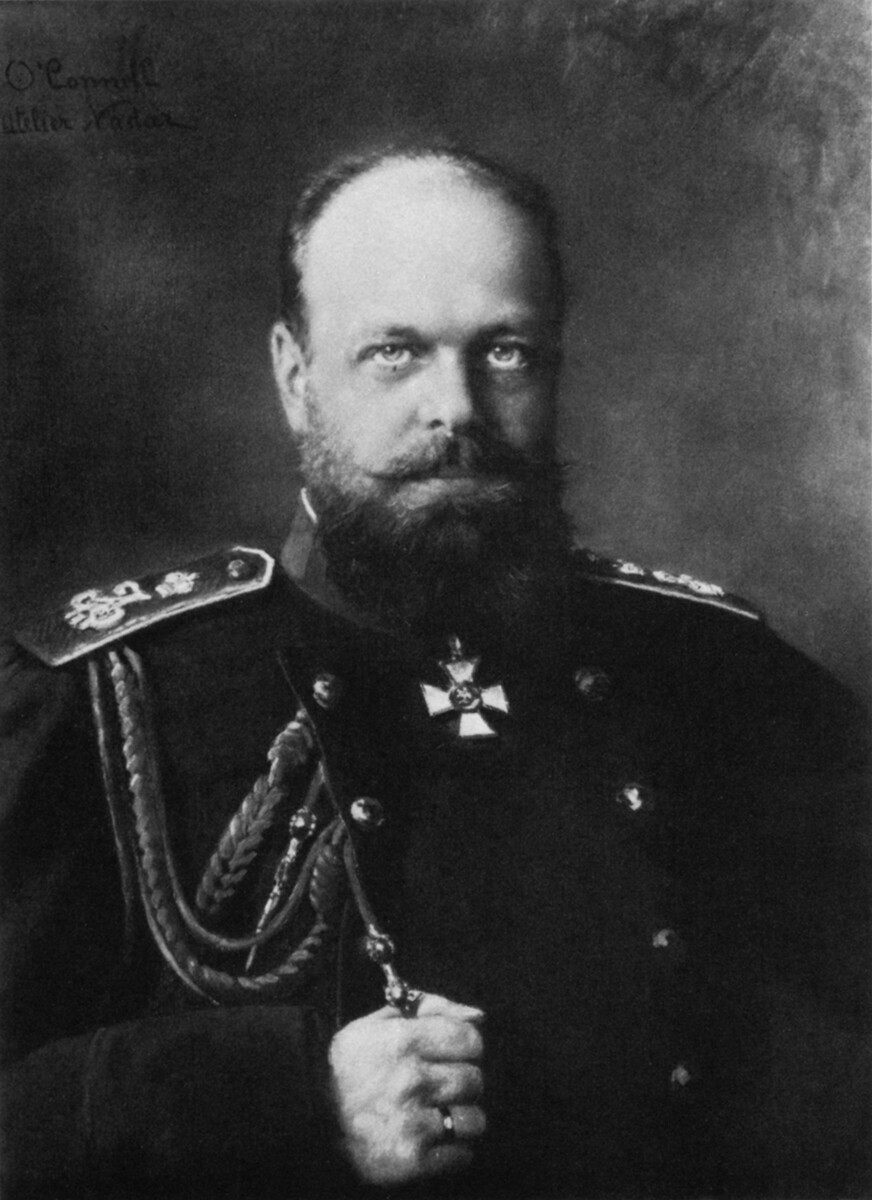 Alexander III. Czar Of Russia, before 1896.
Alexander III. Czar Of Russia, before 1896.
The grandson of Nicholas I, Emperor Alexander III, was taught by such major figures in the art world as Professor Nikolai Tikhobrazov of the Imperial Academy of Arts and Academician Alexei Bogolyubov. The latter, being a marine painter, instilled in the autocrat a love of seascapes, which became the mainstay of Alexander’s work.
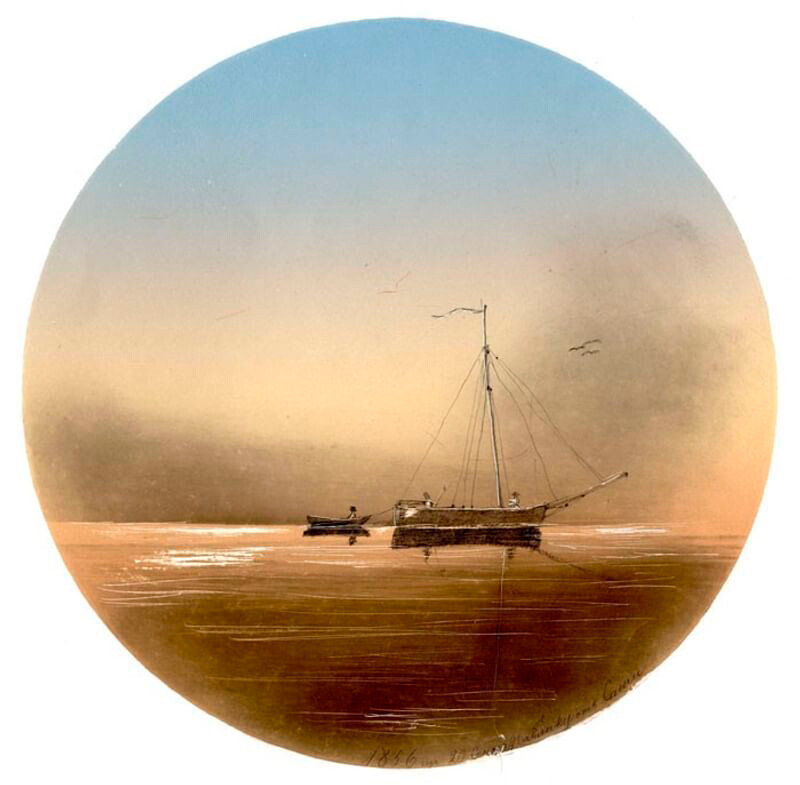 'Seascape.'
'Seascape.'
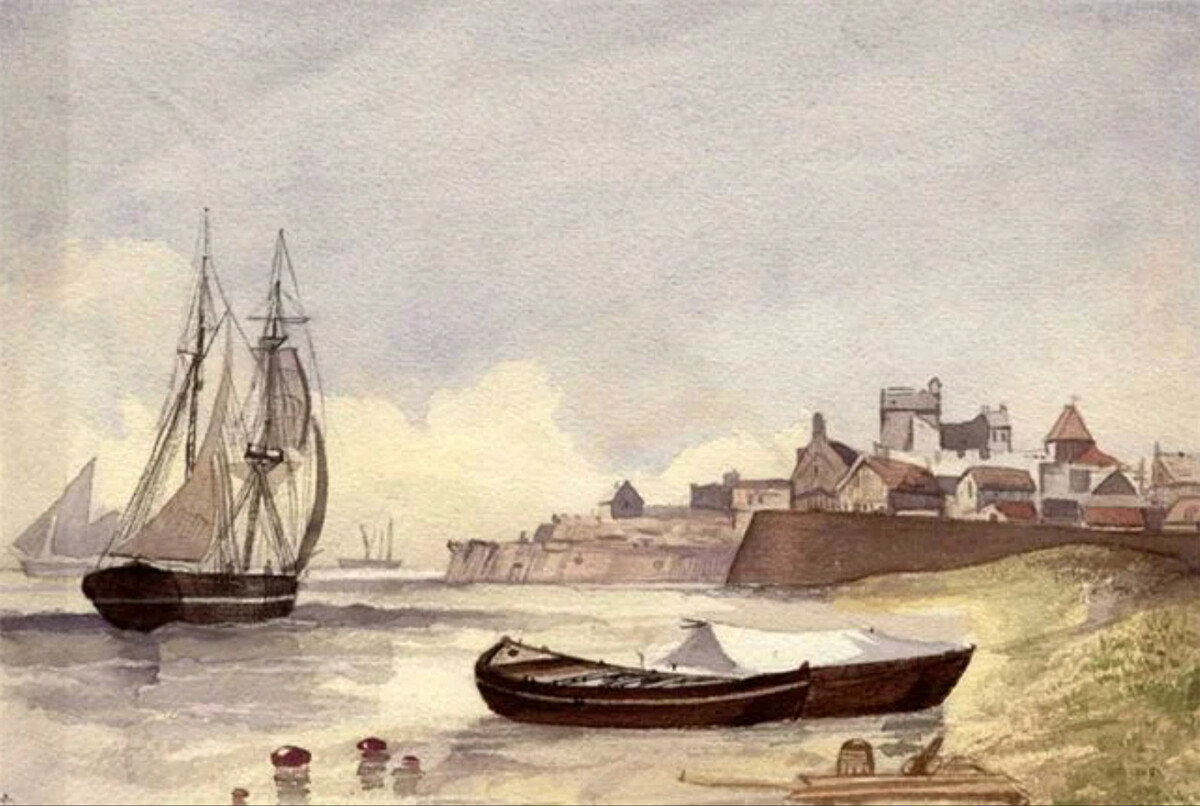 'View of the Bay and the City.'
'View of the Bay and the City.'
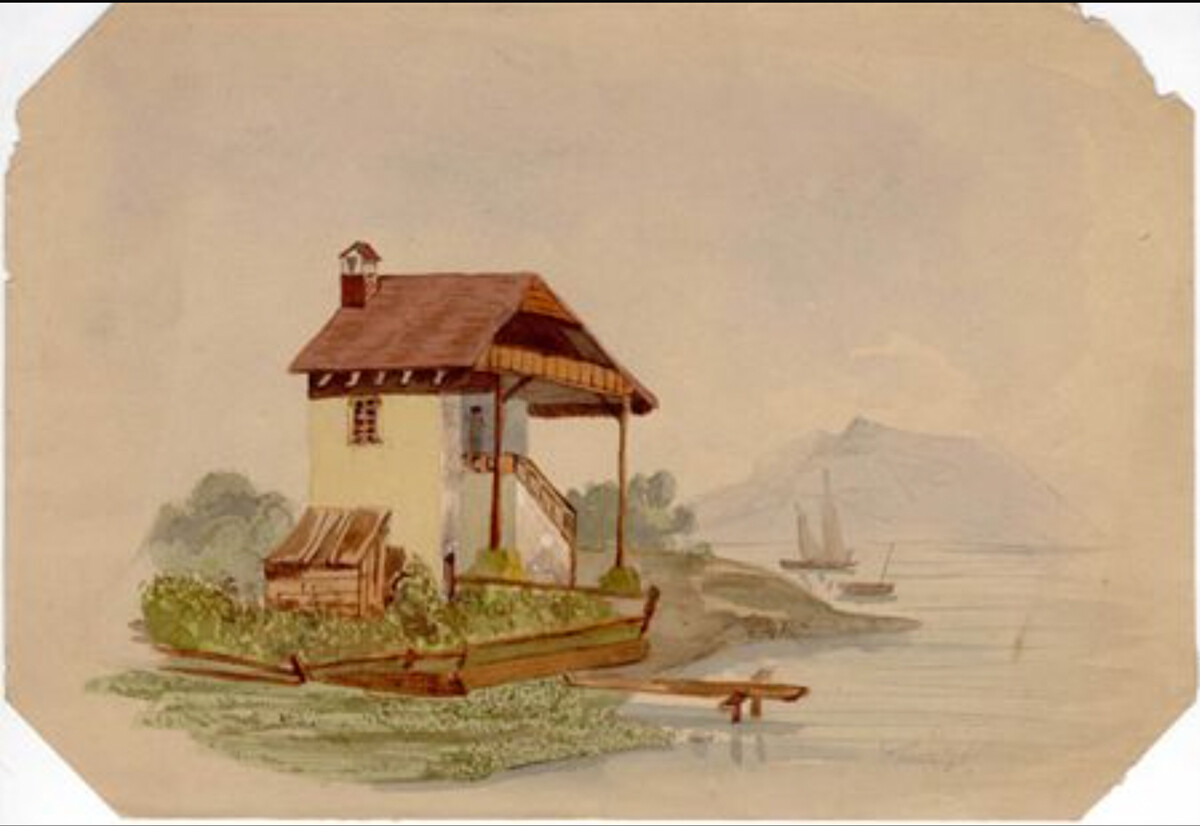 'A House on the Beach.'
'A House on the Beach.'
Empress Maria Feodorovna
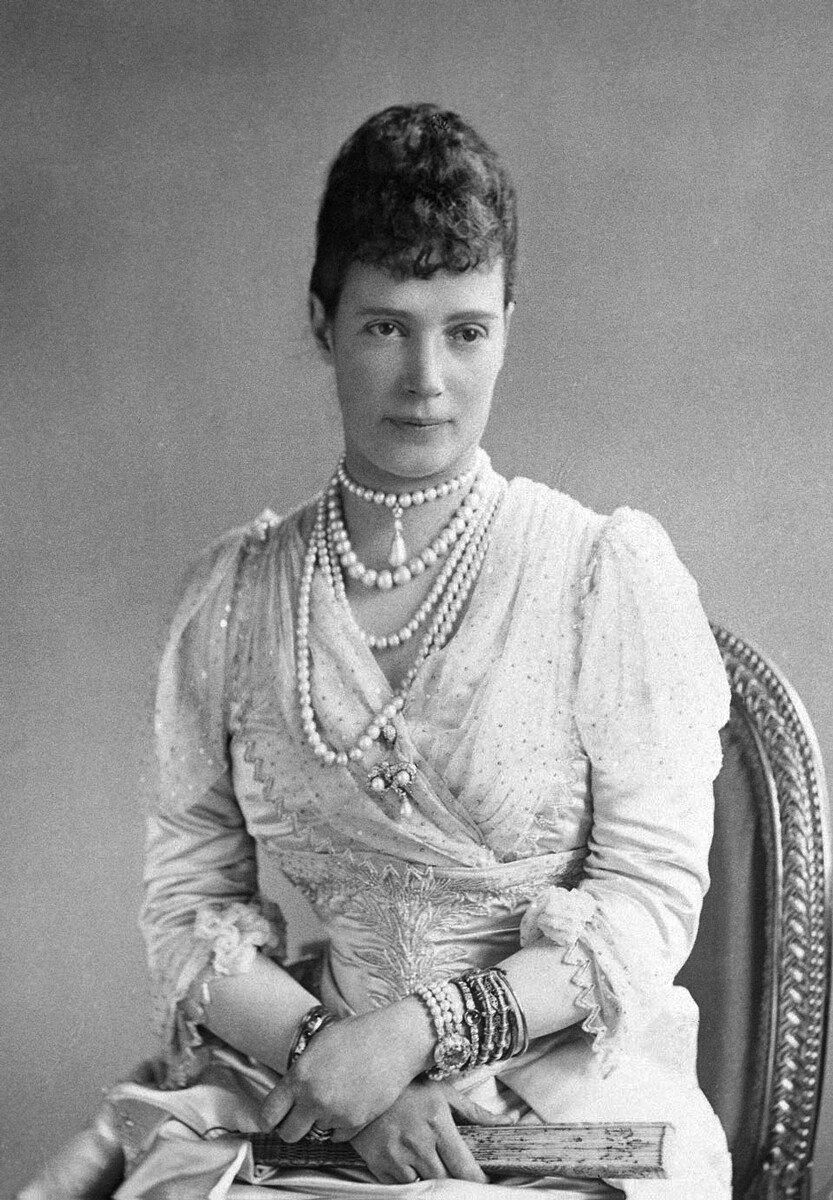 Maria Feodorovna of Russia, 1892.
Maria Feodorovna of Russia, 1892.
Most members of the imperial family left their passion for drawing behind when they grew up. But not Maria Feodorovna, the wife of Alexander III, born Princess Dagmar of Denmark. She drew a lot and willingly, not limiting herself to small sketches, but creating large canvases. As Bogolyubov remarked, the Empress inherited her love of art and painting from her mother, the Danish Queen Louise of Hesse-Kassel.
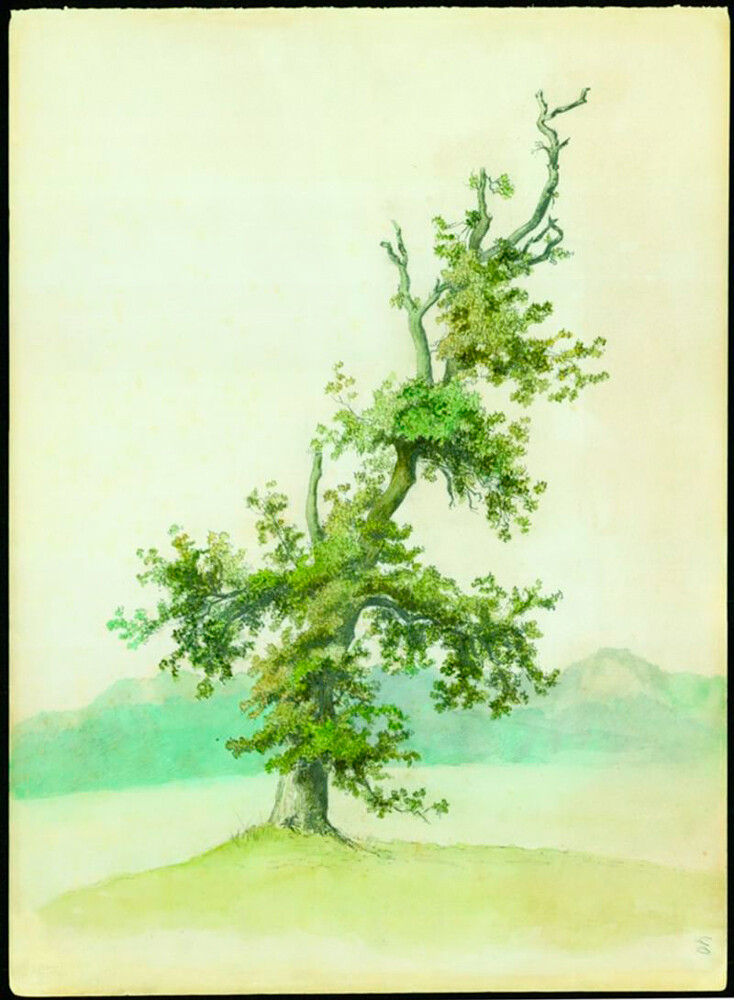 'Old Tree.'
'Old Tree.'
 'Portrait of Daughter Olga.'
'Portrait of Daughter Olga.'
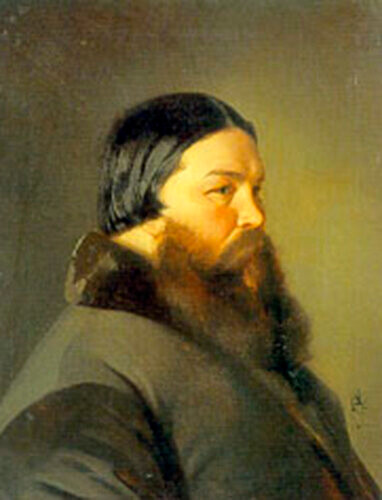 ‘Portrait of Gregory the Coachman.’
‘Portrait of Gregory the Coachman.’
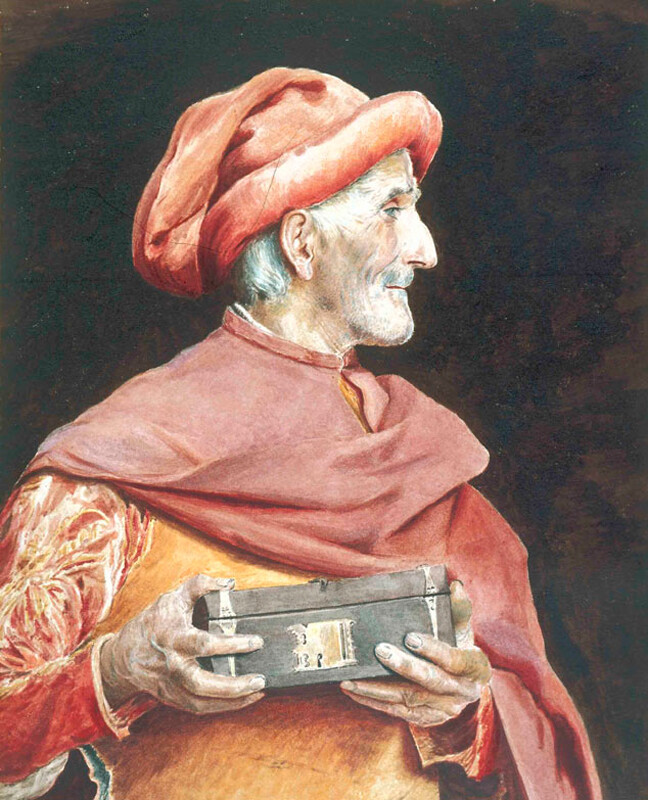 ‘The Miserly.’
‘The Miserly.’
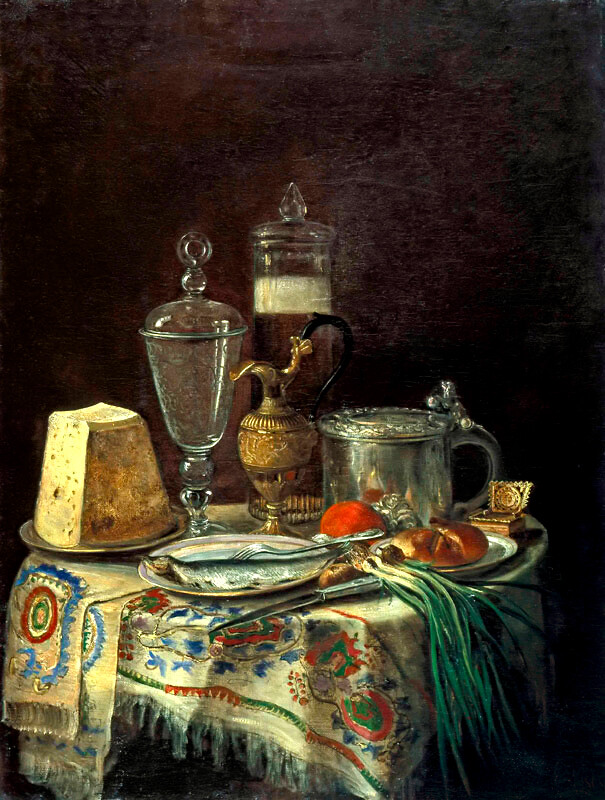 ‘Still Life.’
‘Still Life.’
Grand Duchess Olga Alexandrovna
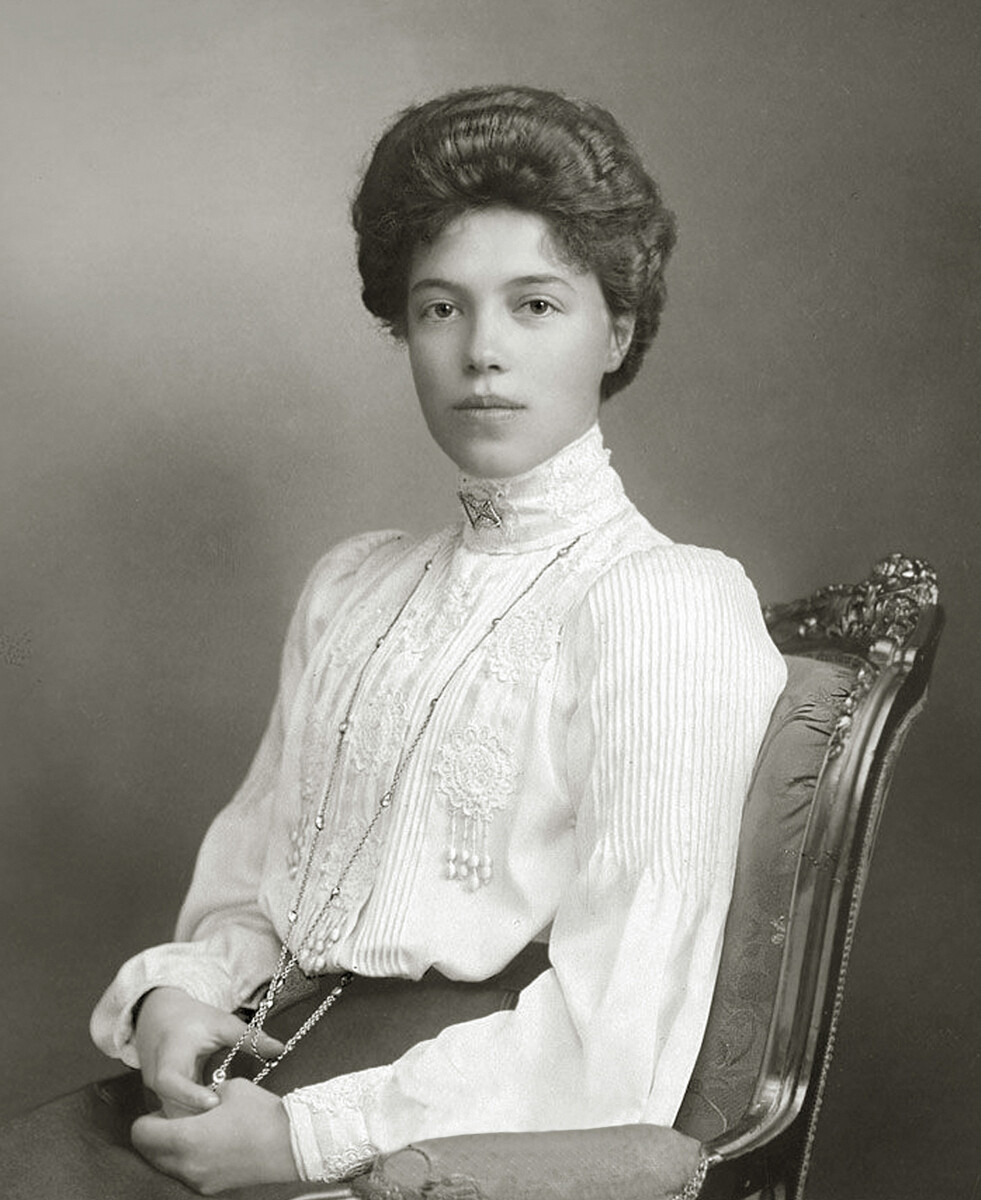 Russian Grand Duchess Olga Alexandrovna Romanova.
Russian Grand Duchess Olga Alexandrovna Romanova.
However, none of the royal family achieved such success in painting as the youngest daughter of Emperor Alexander III and Maria Feodorovna, Nicholas II’s sister Grand Duchess Olga Alexandrovna. A number of teachers helped her develop her natural talent as an artist - the academician Konstantin Kryzhitsky, the painters Stanislav Zhukovsky, Vladimir Makovsky and Sergey Vinogradov.
Olga Alexandrovna did not give up painting even after she was forced to emigrate from Russia during the Civil War. Moreover, by selling her works she was able to support her family financially and do charity work. Buyers included representatives of the royal houses of Great Britain and Norway, as well as Winston Churchill. All in all, throughout her life, the Grand Duchess wrote about two thousand paintings.
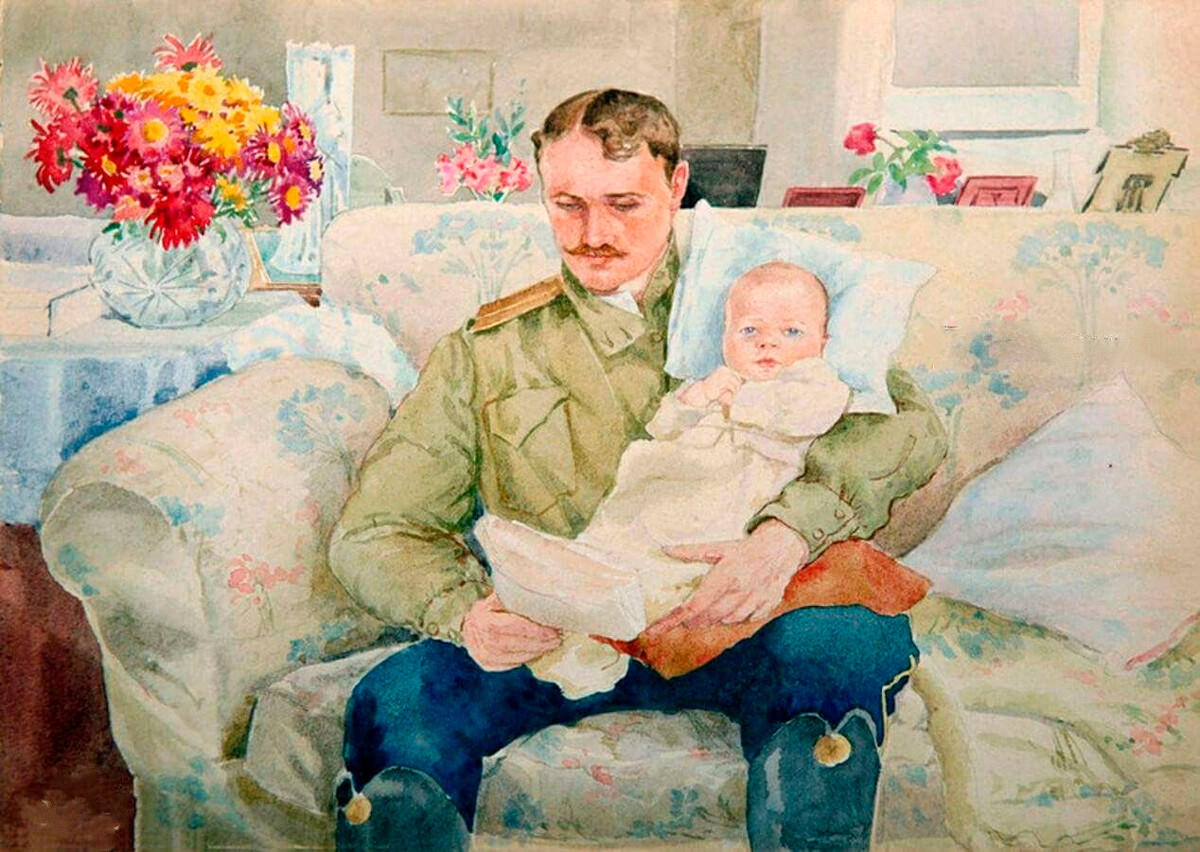 ‘Nikolai Kulikovsky with His Son Tikhon.’
‘Nikolai Kulikovsky with His Son Tikhon.’
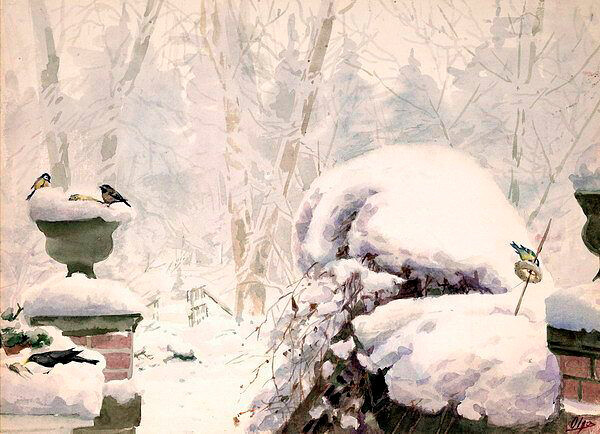 ‘Birds in the Garden.’
‘Birds in the Garden.’
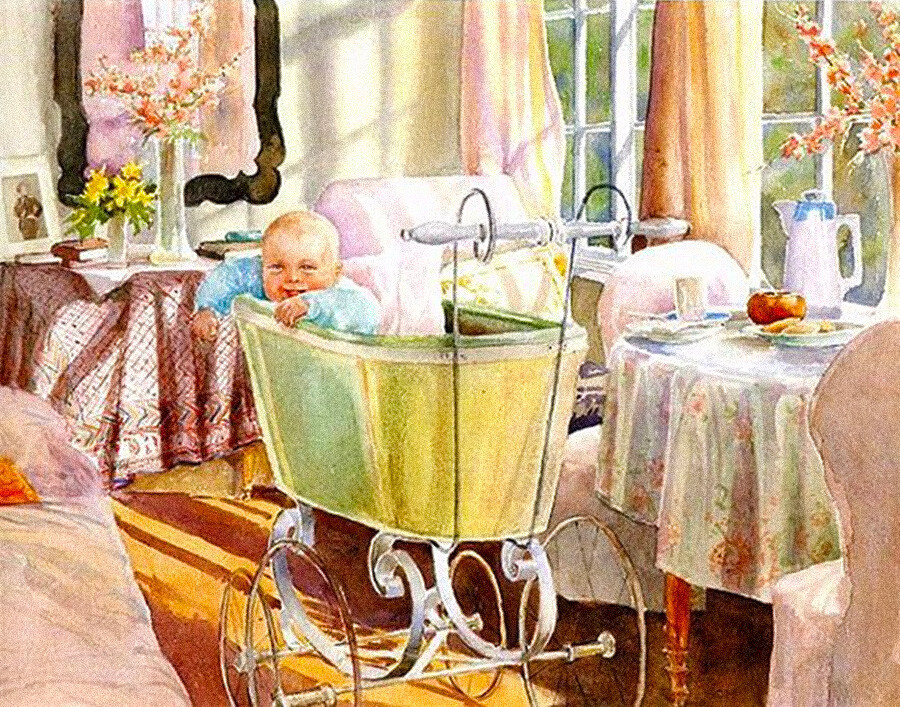 'Portrait of the Eldest Son Tikhon in a Carriage.'
'Portrait of the Eldest Son Tikhon in a Carriage.'
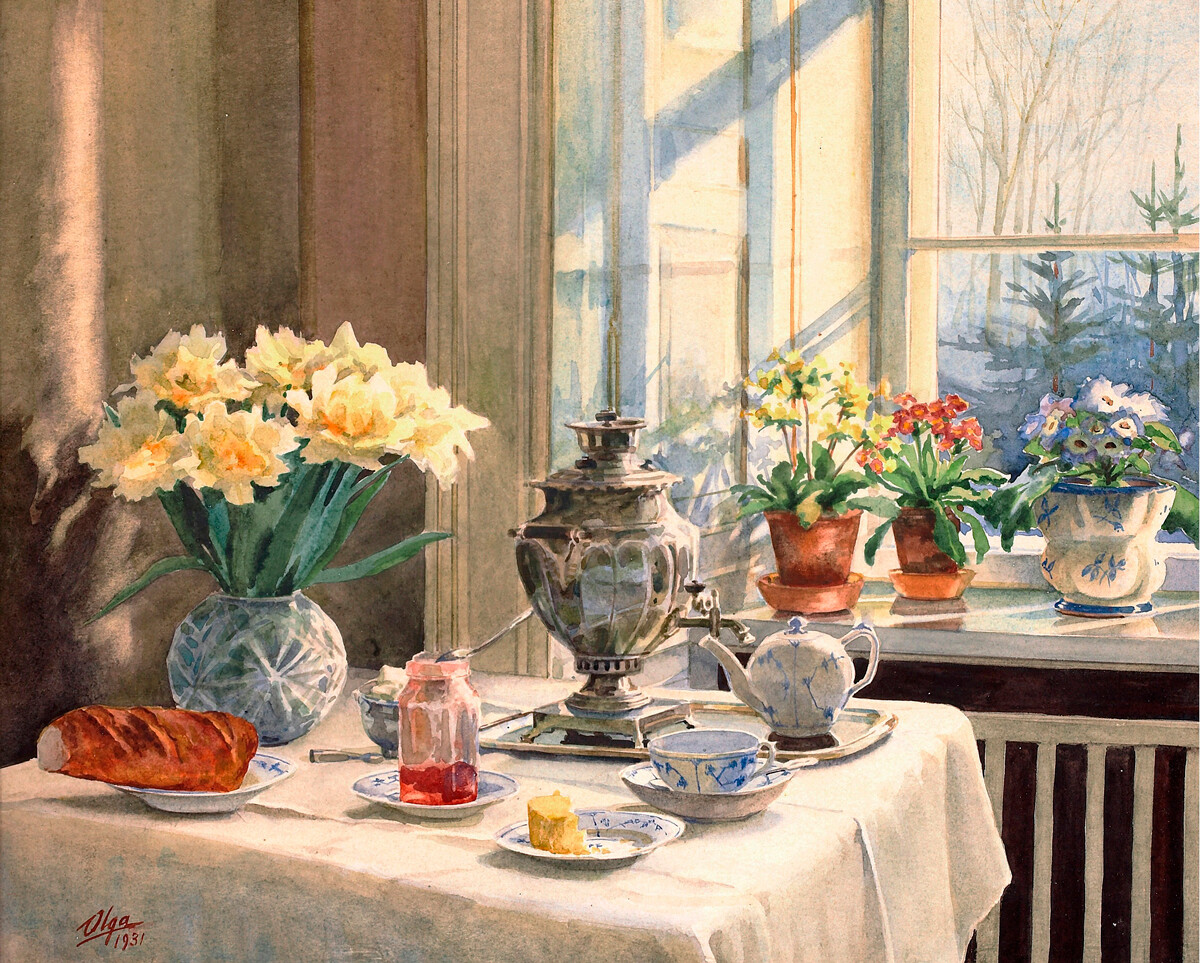 ‘Samovar.’
‘Samovar.’
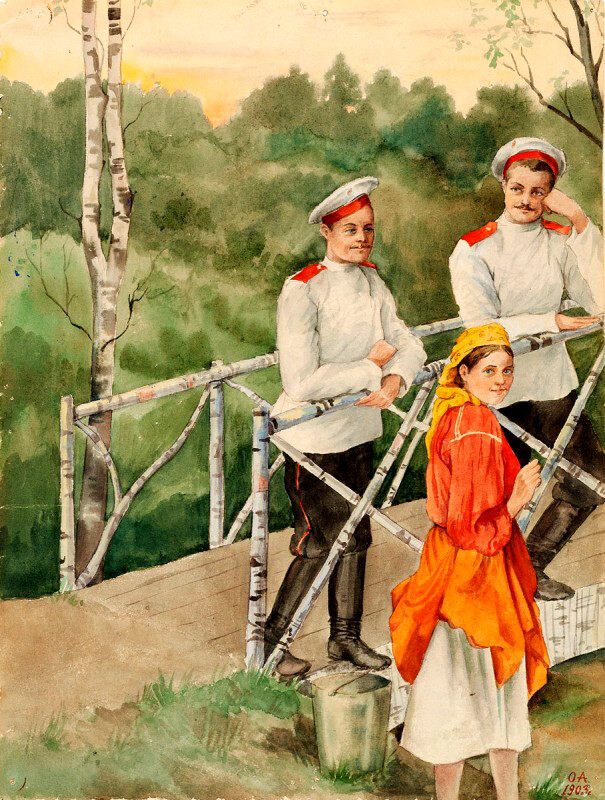
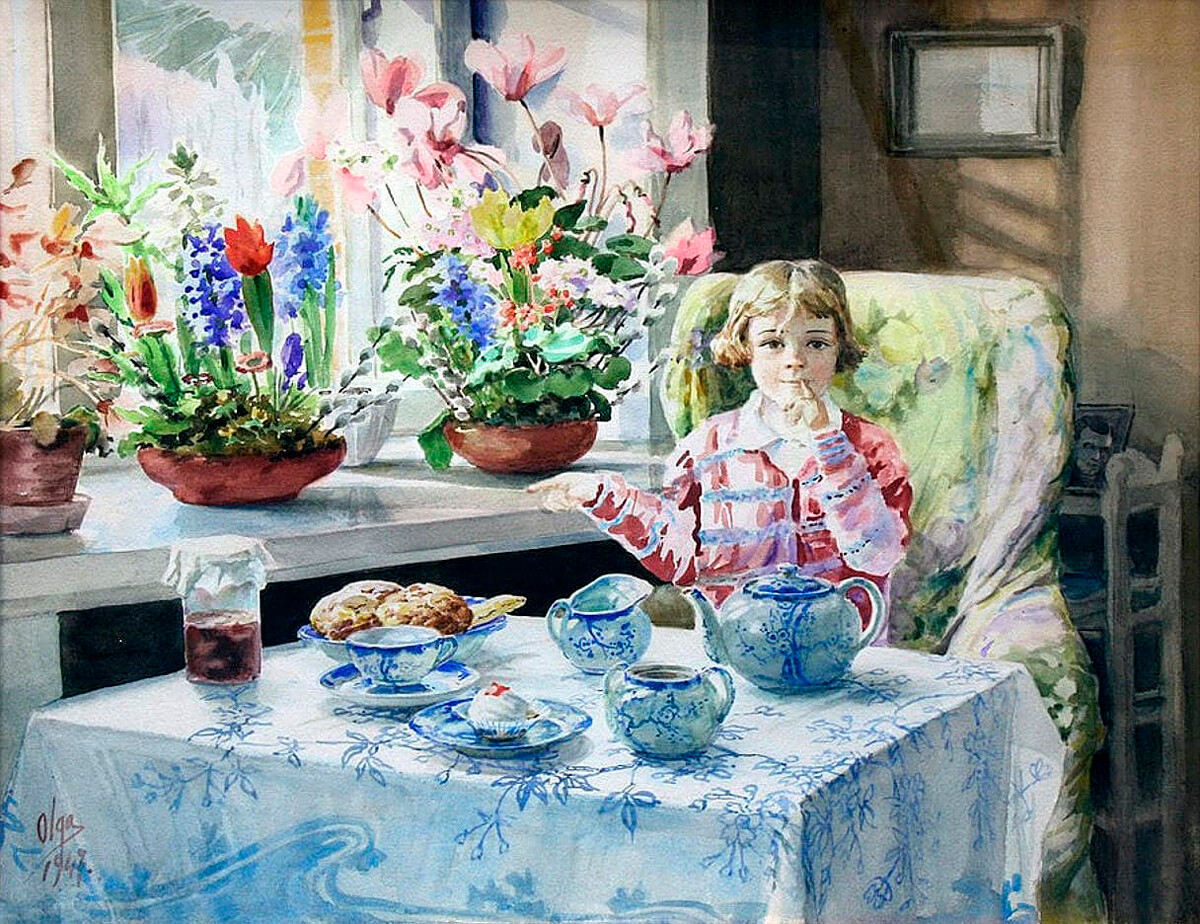 ‘Granddaughter of Princess Olga Ksenia having breakfast.’
‘Granddaughter of Princess Olga Ksenia having breakfast.’
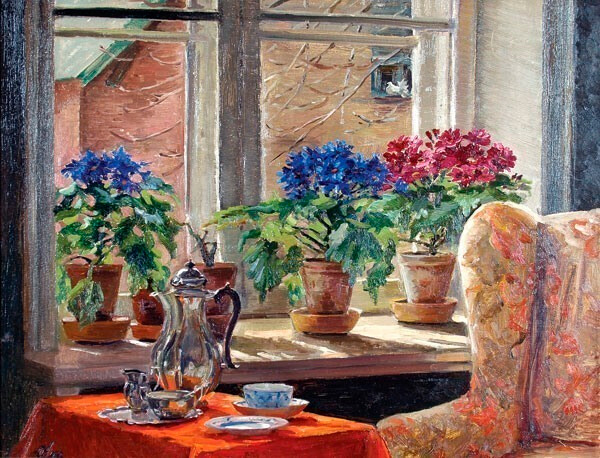
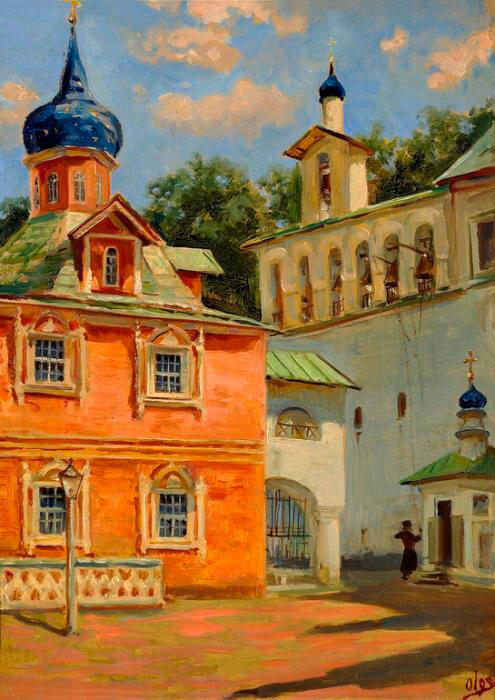 Pskov-Pechersk Monastery.
Pskov-Pechersk Monastery.
Emperor Nicholas II
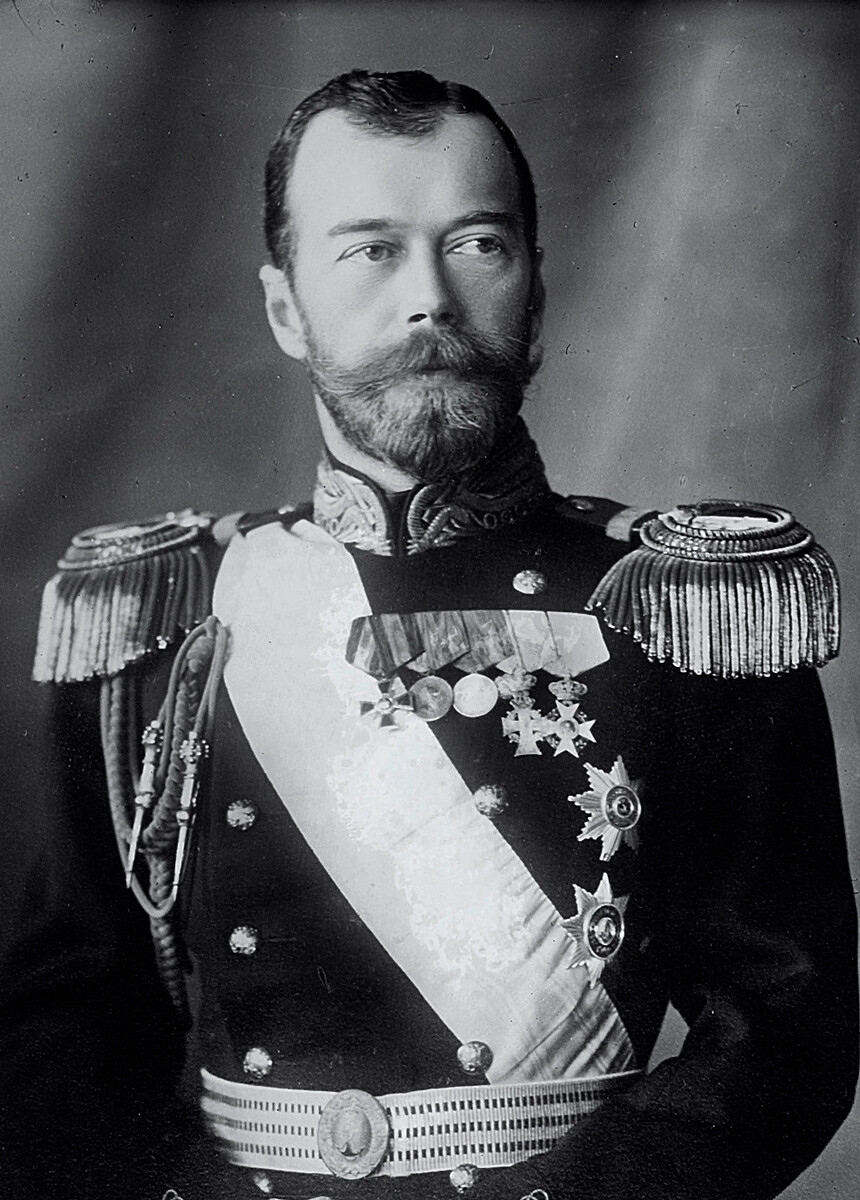 Nicholas II.
Nicholas II.
As a young man, Nicholas II - the last Russian emperor - also occasionally picked up a brush. But, he soon abandoned drawing, giving himself up to a new hobby - tennis.

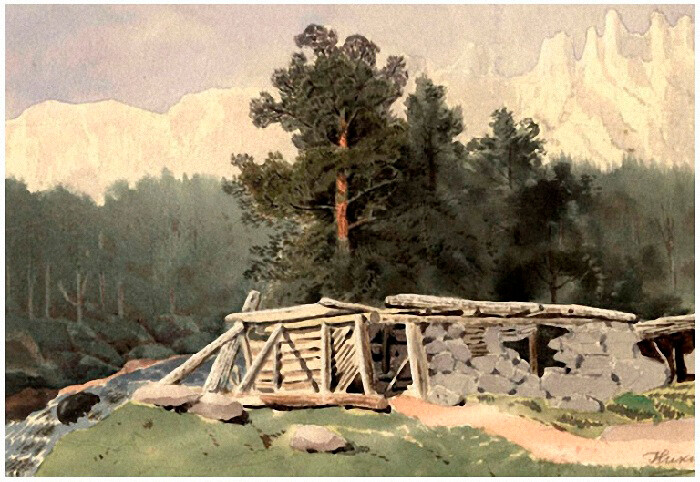 ‘Mountain Landscape.’
‘Mountain Landscape.’


